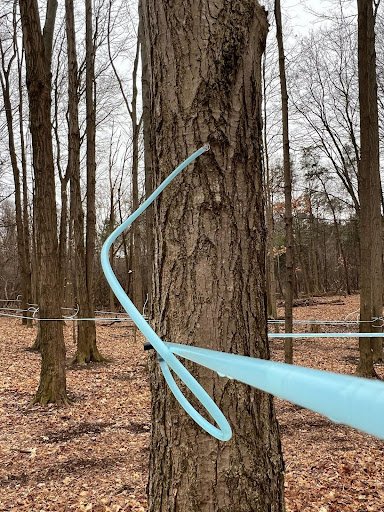Naturalist Notes: A Short Sweet History
Once upon a time, deep in the heart of the North American forests, a community of indigenous people stumbled upon a delightful secret hidden within the trees.
Legend has it that the origins of maple sugaring are intertwined with the stories of the Anishnaabek, particularly the tale of Manabozho (man-ah-boh-zho). One day, he ventured into the village only to find it deserted; no one was hunting, fishing, or tending to the fields. Eventually, he discovered the Anishnaabek lying beneath the maple trees, catching syrup directly in their mouths. Concerned about their laziness, Manabozho intervened by diluting the syrup with water and decreeing that sap would only flow in spring. Thus, the people were compelled to work for their sweet reward by boiling down the sap.
As time passed, the process evolved. The indigenous people mastered the art of tapping trees, developing efficient methods to collect sap. They fashioned specialized containers from bark and boiled the sap in large pots over open fires to intensify its sweetness.
Word of this magical elixir spread far and wide, attracting settlers from distant lands to the forests in search of the legendary maple trees. They too learned the art of syrup-making from the indigenous people, blending their techniques into their culinary traditions. The first written records of this practice date back to 1609.
Since those early days, the tools and techniques have undergone significant evolution. Birch baskets have given way to plastic tubing, and traditional boiling over open fires has been replaced by modern methods like reverse osmosis and evaporators. But enjoying this sweet treat doesn't require a fancy setup—just a maple tree.
Today, maple syrup remains beloved and cherished worldwide. Every spring, as the frost melts away and the maple trees rouse from their winter slumber, people of all ages gather in the forests to tap trees, collect sap, and carry on the sweet tradition that began centuries ago.
Submitted by naturalist Cathy Wesley, February 2024





